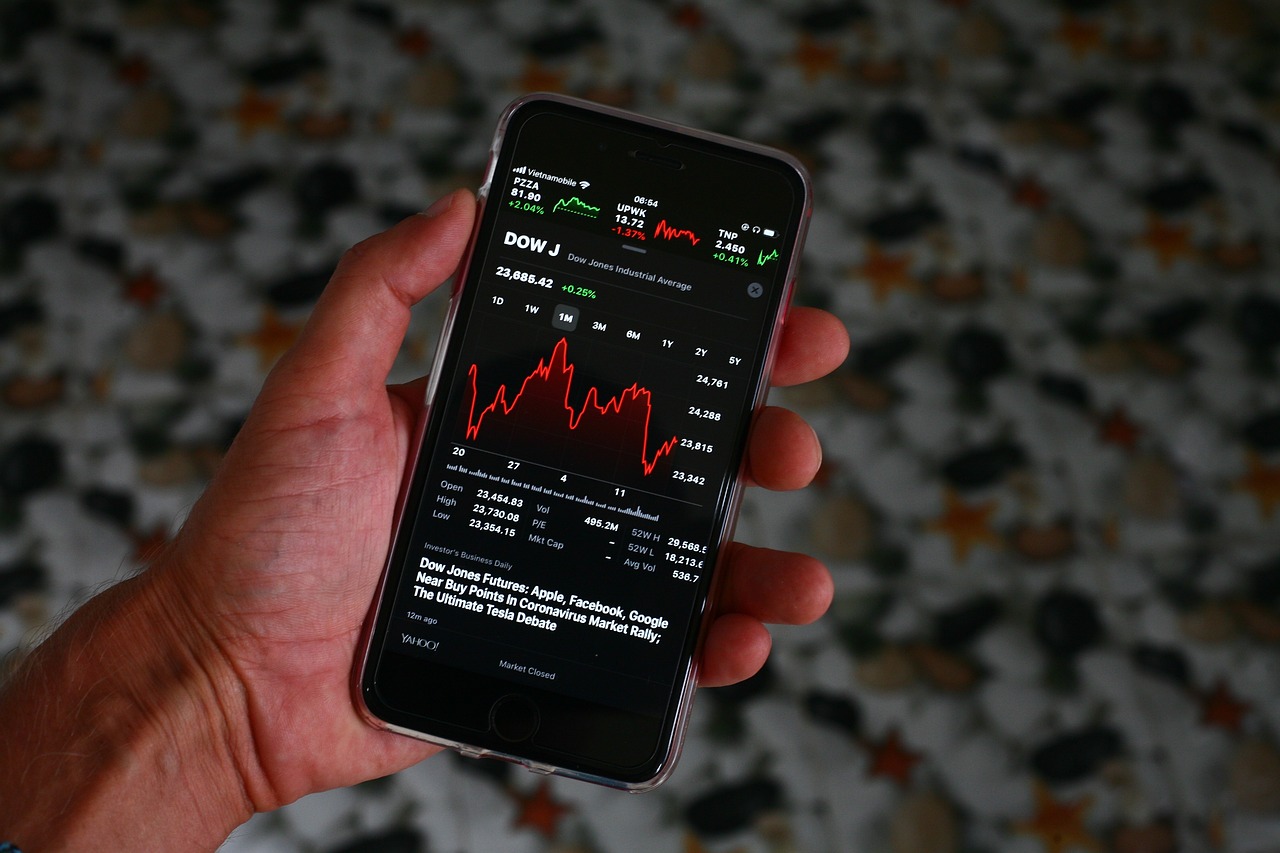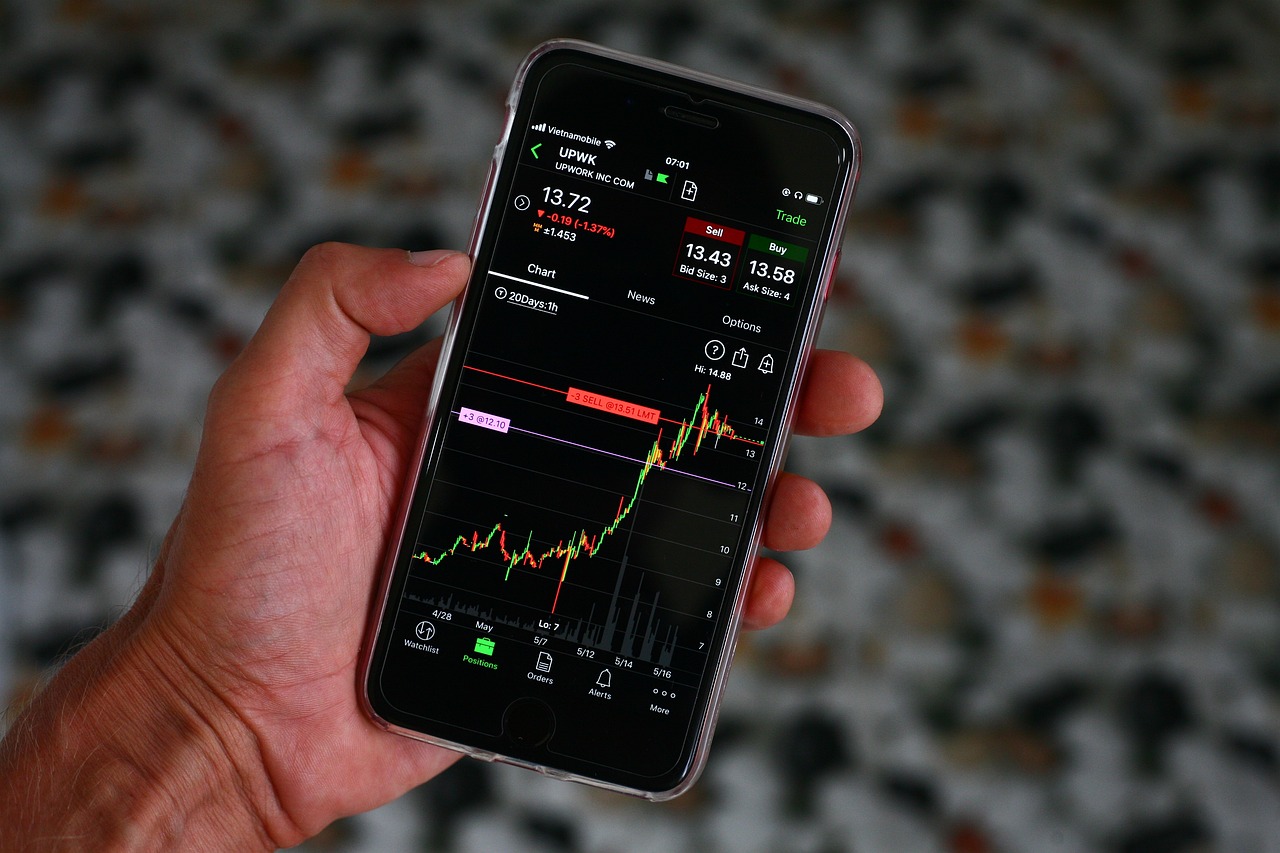The Basics of MACD - A Powerful Tool for Crypto Traders
The world of cryptocurrency trading can feel like a rollercoaster ride, with its ups and downs often leaving traders dizzy and confused. But fear not! One of the most reliable tools in a trader's toolkit is the Moving Average Convergence Divergence (MACD) indicator. This powerful tool not only helps in identifying potential buy and sell signals but also provides insights into the momentum of price movements. In this article, we will dive deep into the MACD, exploring its components, calculation methods, and how it can enhance your trading strategies.
To truly harness the power of MACD, it's essential to understand its three main components: the MACD line, the signal line, and the histogram. These elements work in harmony to give you a clearer picture of market trends. The MACD line is derived from the difference between two exponential moving averages (EMAs), typically the 12-day and 26-day EMAs. The signal line, usually a 9-day EMA of the MACD line, acts as a trigger for buy and sell signals. Finally, the histogram illustrates the distance between the MACD line and the signal line, helping traders visualize momentum.
Calculating the MACD might sound complex, but it's quite straightforward once you break it down. Here’s how you can do it:
1. Calculate the 12-day EMA of the closing prices. 2. Calculate the 26-day EMA of the closing prices. 3. Subtract the 26-day EMA from the 12-day EMA to get the MACD line. 4. Calculate the 9-day EMA of the MACD line to get the signal line. 5. The histogram is simply the MACD line minus the signal line.
By interpreting these values, you can make informed trading decisions. For instance, when the MACD line crosses above the signal line, it may indicate a bullish trend, while a cross below could signify a bearish trend.
So, what exactly are exponential moving averages (EMAs)? Unlike simple moving averages, which give equal weight to all prices in the period, EMAs place greater emphasis on more recent prices. This makes EMAs more responsive to price changes, which is crucial in the fast-paced world of crypto trading. By understanding EMAs, you can better appreciate their role in the MACD calculation and how they contribute to identifying trends.
When it comes to EMAs, there are short-term and long-term variations. Short-term EMAs react quickly to price changes, making them ideal for identifying immediate trends. On the other hand, long-term EMAs smooth out price fluctuations, providing a broader view of the market. The interaction between these two types of EMAs is what makes the MACD such a valuable tool. For instance, when a short-term EMA crosses above a long-term EMA, it can signal a potential upward price movement.
Incorporating EMAs into your trading strategies can significantly enhance your decision-making process. Here are a few popular strategies:
- Crossover Strategies: Buy when the short-term EMA crosses above the long-term EMA and sell when it crosses below.
- Trend-Following Techniques: Use EMAs to identify the overall trend direction and trade in that direction.
By mastering these strategies, you can maximize your gains in the ever-evolving cryptocurrency market.
Understanding how to interpret MACD signals is crucial for any trader. A bullish crossover occurs when the MACD line crosses above the signal line, suggesting a potential upward price movement. Conversely, a bearish crossover happens when the MACD line crosses below the signal line, indicating a possible downward trend. Additionally, observing divergence between the MACD and the price can provide valuable insights into potential trend reversals.
Many traders successfully utilize the MACD indicator in their trading strategies. Some of the most common approaches include:
- Momentum Trading: Capitalize on the strength of price movements by entering trades when MACD signals strong momentum.
- Trend Reversal Signals: Look for divergences between MACD and price action to identify potential reversals.
Moreover, combining MACD with other indicators can yield even better results.
Enhancing your trading accuracy is possible by integrating MACD with other technical indicators. For example, you can combine MACD with the Relative Strength Index (RSI) to confirm signals. If both indicators suggest a bullish trend, it strengthens the case for entering a trade. Similarly, using Bollinger Bands alongside MACD can help identify overbought or oversold conditions, providing additional context for your trading decisions.
Risk management is a critical aspect of trading, especially in the volatile crypto markets. When using MACD, it's essential to set stop-loss and take-profit levels to protect your capital. A stop-loss order can help minimize losses if the market moves against you, while a take-profit order allows you to lock in profits when a trade reaches a predetermined level. By effectively managing risk, you can navigate the unpredictable nature of cryptocurrency trading with greater confidence.
- What is MACD used for? MACD is primarily used to identify potential buy and sell signals based on market momentum and trend direction.
- How reliable is the MACD indicator? While MACD is a powerful tool, it's essential to use it in conjunction with other indicators and analysis methods to improve reliability.
- Can MACD be used for day trading? Yes, many day traders use MACD to make quick trading decisions based on short-term price movements.

Understanding MACD Components
The Moving Average Convergence Divergence (MACD) indicator is a favorite among traders, and for good reason. It’s like having a reliable compass in the unpredictable sea of cryptocurrency trading. At its core, the MACD consists of three main components: the MACD line, the signal line, and the histogram. Each of these elements plays a crucial role in helping traders make informed decisions, and understanding how they interact can significantly enhance your trading strategy.
The MACD line is the heart of the indicator. It is calculated by subtracting the 26-period exponential moving average (EMA) from the 12-period EMA. This line reflects the difference between these two EMAs, allowing traders to see the momentum of the price movement. When the MACD line crosses above the zero line, it often indicates bullish momentum, while crossing below suggests bearish momentum. Think of it as a signal that tells you whether the tide is coming in or going out.
Next, we have the signal line, which is simply the 9-period EMA of the MACD line itself. This line acts as a trigger for buy and sell signals. When the MACD line crosses above the signal line, it can be interpreted as a buy signal, suggesting that it may be a good time to enter a position. Conversely, when the MACD line crosses below the signal line, it often indicates a sell signal. It’s like having a trusted friend who nudges you when it’s time to take action.
Lastly, there's the histogram, which visually represents the difference between the MACD line and the signal line. This component is crucial because it provides insight into the strength of the momentum. A growing histogram indicates increasing momentum, while a shrinking histogram suggests that momentum is fading. Traders often look at the histogram to gauge the intensity of price movements. Imagine it as the volume knob on your favorite song; the more you turn it up, the more intense the experience!
To summarize, the MACD indicator is composed of three vital components that work together to provide a comprehensive view of market trends:
| Component | Description |
|---|---|
| MACD Line | The difference between the 12-period EMA and the 26-period EMA, indicating momentum direction. |
| Signal Line | The 9-period EMA of the MACD line, used to generate buy and sell signals. |
| Histogram | A visual representation of the difference between the MACD line and the signal line, indicating momentum strength. |
Understanding these components is essential for any crypto trader. By mastering the MACD, you can enhance your ability to read market signals and make more informed trading decisions. So, next time you check your charts, pay close attention to the MACD components – they might just be the key to unlocking your trading potential!

How to Calculate MACD
Calculating the Moving Average Convergence Divergence (MACD) might sound complex at first, but once you break it down, it’s actually quite straightforward. At its core, the MACD is derived from the difference between two exponential moving averages (EMAs). These EMAs are crucial because they give more weight to recent prices, allowing traders to react more quickly to market changes. The two EMAs typically used are the 12-day EMA and the 26-day EMA. To get started, you’ll first need to calculate these EMAs.
Here’s how to calculate the MACD step-by-step:
- Calculate the 12-day EMA: This is done by taking the average of the closing prices for the last 12 days, giving more weight to the most recent prices.
- Calculate the 26-day EMA: Similarly, this involves calculating the average of the closing prices for the last 26 days.
- Find the MACD line: Subtract the 26-day EMA from the 12-day EMA. The formula looks like this:
MACD Line 12-day EMA - 26-day EMA
- Calculate the Signal Line: The signal line is typically a 9-day EMA of the MACD line itself. This helps smooth out the MACD values and makes it easier to identify trends.
- Get the MACD Histogram: Finally, the histogram is simply the difference between the MACD line and the signal line. It visually represents the distance between these two lines and provides insights into the strength of the trend.
Now that you have a grasp of the calculations, let’s look at a quick example to illustrate how this works in practice. Imagine you’re analyzing a cryptocurrency over a 30-day period. You’d first compute the 12-day and 26-day EMAs using the closing prices over those periods. Let’s say your calculations yield:
| Period | 12-day EMA | 26-day EMA | MACD Line | Signal Line | MACD Histogram |
|---|---|---|---|---|---|
| Day 30 | 150 | 145 | 5 | 4 | 1 |
In this example, the MACD line is 5, which indicates that the shorter-term EMA is above the longer-term EMA, suggesting a bullish trend. The signal line, at 4, shows that the trend is strengthening, and the histogram value of 1 indicates the momentum is in favor of buyers.
Understanding how to calculate MACD is a vital skill for any crypto trader. It not only helps you identify potential buy and sell signals but also allows you to gauge market momentum. As you become more familiar with these calculations, you'll find that they can significantly enhance your trading strategies and decision-making process.

Exponential Moving Averages Explained
The Exponential Moving Average (EMA) is a crucial component of the MACD indicator, serving as a backbone for its calculations and interpretations. Unlike the Simple Moving Average (SMA), which gives equal weight to all data points, the EMA places greater emphasis on the most recent prices. This characteristic makes it more responsive to price changes, allowing traders to react quickly to market movements. Imagine the EMA as a friend who always remembers your latest achievements more than your past ones; it keeps you updated and focused on the now.
To understand the significance of EMAs in the MACD calculation, it’s essential to grasp how they are derived. The EMA is calculated using a formula that incorporates a smoothing factor, which is derived from the number of periods being analyzed. The formula can be a bit daunting at first glance, but it essentially boils down to giving more weight to recent price data while still considering older prices. This results in a line that closely follows the price action, making it a valuable tool for traders.
For example, consider a scenario where a cryptocurrency has been experiencing a steady increase in price. The EMA will react more swiftly to this upward movement compared to the SMA, which might lag behind. This responsiveness can be the difference between entering a trade at the right moment or missing out altogether. In the fast-paced world of crypto trading, every second counts, and using EMAs can significantly enhance your trading strategy.
When analyzing EMAs, traders often look at two different periods: a short-term EMA and a long-term EMA. The short-term EMA reacts quickly to price changes, while the long-term EMA smooths out the price action over a more extended period. This interaction between the two EMAs is what gives rise to the MACD signal. When the short-term EMA crosses above the long-term EMA, it often signals a bullish trend, whereas a cross below can indicate a bearish trend. This crossover is akin to a race where the faster runner (short-term EMA) overtakes the slower one (long-term EMA), signaling a change in momentum.
To visualize this, consider the following table that summarizes the differences between short-term and long-term EMAs:
| Aspect | Short-Term EMA | Long-Term EMA |
|---|---|---|
| Responsiveness | High | Low |
| Period | Usually 12 or 26 days | Usually 50 or 200 days |
| Use in Trading | Identifying quick trends | Identifying overall market direction |
In conclusion, understanding EMAs is crucial for any trader looking to leverage the MACD indicator effectively. By focusing on recent price data and adjusting quickly to market changes, EMAs provide a dynamic tool for analyzing trends and making informed trading decisions. Just like a skilled navigator adjusts their course based on the changing winds, traders using EMAs can stay ahead of the curve in the volatile world of cryptocurrency.

Short-Term vs. Long-Term EMAs
When diving into the world of trading, understanding the difference between short-term and long-term Exponential Moving Averages (EMAs) is crucial for making informed decisions. Think of EMAs as a compass that guides traders through the often turbulent waters of the cryptocurrency market. Short-term EMAs, typically calculated over periods like 12 or 26 days, react quickly to price changes, allowing traders to catch trends as they emerge. On the other hand, long-term EMAs, such as those calculated over 50 or 200 days, provide a broader view of the market, smoothing out the noise and helping traders identify overarching trends.
The interaction between these two types of EMAs can create powerful signals. For instance, when a short-term EMA crosses above a long-term EMA, it often indicates a potential bullish trend, suggesting that it might be a good time to enter a trade. Conversely, if the short-term EMA crosses below the long-term EMA, it can signal a bearish trend, which might prompt traders to exit their positions or consider shorting the market. This phenomenon is commonly referred to as a "crossover," and it's a fundamental aspect of many trading strategies.
Understanding how these EMAs interact can also help traders gauge the strength of a trend. A wide gap between the short-term and long-term EMAs often indicates a strong trend, while a narrow gap may suggest that the trend is weakening. In volatile markets like cryptocurrency, where prices can swing dramatically, keeping an eye on both short-term and long-term EMAs can provide valuable insights into market momentum.
To illustrate the differences between short-term and long-term EMAs, consider the following table:
| Type of EMA | Typical Period | Market Reaction |
|---|---|---|
| Short-Term EMA | 12 - 26 days | Quickly responds to price changes, ideal for short-term trading |
| Long-Term EMA | 50 - 200 days | Smooths out price fluctuations, ideal for identifying long-term trends |
Ultimately, the choice between short-term and long-term EMAs depends on your trading style and objectives. If you’re a day trader looking to capitalize on quick price movements, short-term EMAs might be your best friend. However, if you’re a long-term investor focused on holding assets for extended periods, long-term EMAs can help you stay aligned with the overall market direction. By combining both types of EMAs in your analysis, you can create a more nuanced trading strategy that adapts to changing market conditions.

Using EMAs in Trading Strategies
When it comes to trading in the volatile world of cryptocurrencies, Exponential Moving Averages (EMAs) serve as a crucial tool in a trader's arsenal. These averages not only smooth out price data but also provide insights into market trends that can significantly enhance your trading strategy. Imagine EMAs as a compass guiding you through the turbulent seas of crypto trading; they help you navigate by indicating potential entry and exit points based on price movements.
One of the most popular strategies incorporating EMAs is the crossover strategy. This technique involves tracking two different EMAs—typically a short-term EMA and a long-term EMA. When the short-term EMA crosses above the long-term EMA, it signals a potential bullish trend, suggesting it might be a good time to buy. Conversely, when the short-term EMA crosses below the long-term EMA, it indicates a bearish trend, signaling a possible sell opportunity. This simple yet effective strategy allows traders to capitalize on market momentum.
However, relying solely on EMAs can sometimes lead to false signals, especially in a choppy market. To mitigate this risk, traders often combine EMAs with other indicators. For instance, integrating the Relative Strength Index (RSI) can provide additional confirmation of a trend's strength. If the EMAs suggest a bullish crossover but the RSI indicates that the market is overbought, it might be wise to exercise caution. This combination of indicators can help traders make more informed decisions, increasing the likelihood of successful trades.
Another effective strategy is the trend-following technique, where traders look for established trends and use EMAs to determine their direction. For example, if the price is consistently above the EMA, it indicates a strong uptrend, and traders might choose to enter long positions. On the flip side, if the price falls below the EMA, it could signal a downtrend, prompting traders to consider short positions. This approach allows traders to ride the wave of existing trends rather than trying to predict market reversals, which can often lead to losses.
To visualize how these strategies work, consider the following table that outlines the key components of EMA-based trading strategies:
| Strategy | Description | Key Indicators |
|---|---|---|
| Crossover Strategy | Buying when the short-term EMA crosses above the long-term EMA and selling when it crosses below. | Short-term EMA, Long-term EMA |
| Trend-Following Technique | Entering long positions when the price is above the EMA and short positions when below. | EMA |
| EMA with RSI | Using EMAs in conjunction with the RSI to confirm trends and avoid false signals. | EMA, RSI |
Ultimately, the key to successfully using EMAs in trading strategies lies in understanding how they fit into the broader market context. By combining EMAs with other indicators and employing sound risk management practices, traders can significantly improve their chances of success in the unpredictable world of cryptocurrency trading. Remember, while EMAs are powerful, they are just one piece of the puzzle; always be ready to adapt and refine your strategies based on market conditions.
- What is an EMA? An Exponential Moving Average (EMA) is a type of moving average that gives more weight to recent prices, making it more responsive to new information compared to a simple moving average.
- How do I choose the right EMAs for my strategy? The choice of EMAs often depends on your trading style. Short-term traders might prefer a 9-day and 21-day EMA, while long-term traders might use 50-day and 200-day EMAs.
- Can I use EMAs in other markets besides crypto? Absolutely! EMAs are widely used in various financial markets, including stocks, forex, and commodities.

Interpreting MACD Signals
The Moving Average Convergence Divergence (MACD) indicator is more than just a fancy term thrown around in trading circles; it’s a powerful tool that can help you make informed decisions in the chaotic world of cryptocurrency trading. Understanding how to interpret MACD signals can be the difference between a profitable trade and a costly mistake. So, let’s dive into the nuances of MACD signals and what they mean for your trading strategy.
At its core, the MACD is designed to identify changes in momentum by comparing two different exponential moving averages (EMAs). When you see the MACD line cross above the signal line, it’s generally interpreted as a bullish signal, suggesting that it might be a good time to buy. Conversely, when the MACD line crosses below the signal line, it’s a bearish signal, indicating that it may be wise to sell or short the asset. But don’t just take these signals at face value; context is key!
One of the most useful aspects of MACD signals is the concept of divergence. Divergence occurs when the price of the cryptocurrency and the MACD indicator move in opposite directions. For example, if the price is making new highs while the MACD is making lower highs, this could be a sign that the upward momentum is weakening, potentially leading to a reversal. This can be visualized in a table:
| Price Movement | MACD Movement | Interpretation |
|---|---|---|
| Higher Highs | Lower Highs | Potential bearish reversal |
| Lower Lows | Higher Lows | Potential bullish reversal |
Another important aspect to consider is the MACD histogram, which represents the difference between the MACD line and the signal line. A growing histogram indicates increasing momentum, while a shrinking histogram suggests weakening momentum. When the histogram shifts from positive to negative, or vice versa, it can serve as an early warning sign of a potential trend change. Think of it like a car’s speedometer: if it’s accelerating, you’re likely going faster, but if it starts to slow down, it’s time to be cautious!
It’s also crucial to be aware of the timeframe you’re trading in. MACD signals can vary significantly based on whether you’re looking at a 1-minute chart, a daily chart, or anything in between. Shorter timeframes may produce more signals, but they can also be less reliable due to market noise. On the other hand, longer timeframes tend to provide more reliable signals but may result in fewer trading opportunities.
In summary, interpreting MACD signals involves not just looking at the MACD line and the signal line, but also considering the broader context of price movements, divergences, and histogram changes. This multifaceted approach can help you make better-informed trading decisions, ultimately improving your performance in the cryptocurrency market.
- What is the best timeframe to use MACD?
While it depends on your trading style, many traders find that using MACD on daily or weekly charts provides more reliable signals. - Can MACD be used in conjunction with other indicators?
Absolutely! Many traders combine MACD with indicators like RSI or Bollinger Bands for enhanced accuracy. - How often should I check MACD signals?
This varies by trader. Day traders may check more frequently, while swing traders might review their signals daily or weekly.

Common MACD Trading Strategies
The Moving Average Convergence Divergence (MACD) indicator is a favorite among crypto traders for a good reason. It’s not just a tool; it’s like having a seasoned guide in the unpredictable jungle of cryptocurrency markets. Traders often employ various strategies to harness the power of MACD, making it an essential component of their trading arsenal. Understanding these strategies can significantly enhance your trading performance and help you navigate the volatile waters of crypto trading.
One of the most popular MACD trading strategies is momentum trading. This approach focuses on identifying the strength of a trend. When the MACD line crosses above the signal line, it’s often interpreted as a bullish signal, suggesting that the asset is gaining momentum. Conversely, when the MACD line crosses below the signal line, it indicates a bearish trend. Traders can capitalize on these signals by entering trades that align with the prevailing momentum, riding the wave until signs of reversal appear.
Another effective strategy involves trend reversal signals. Here’s where it gets exciting! When the MACD diverges from the price action—meaning the price is making new highs or lows while the MACD isn’t—it can signal a potential reversal. For instance, if the price is hitting a new high, but the MACD is not, it could be a warning sign that the trend is losing strength. Traders can use this information to either take profits or prepare for a potential market shift.
To further enhance trading accuracy, many traders combine MACD with other indicators. For example, integrating the MACD with the Relative Strength Index (RSI) can provide a more comprehensive view of market conditions. While the MACD reveals momentum and trend direction, the RSI indicates whether an asset is overbought or oversold. When both indicators align—say, the MACD gives a bullish signal and the RSI is in the oversold territory—it can create a powerful entry point for traders.
Moreover, utilizing Bollinger Bands alongside MACD can also yield fruitful results. Bollinger Bands help identify volatility and potential price breakouts. When the price touches the lower band and the MACD gives a bullish crossover, it may suggest a strong buying opportunity. Conversely, if the price touches the upper band while the MACD signals a bearish crossover, it could indicate a selling opportunity. This combination allows traders to make informed decisions based on both trend strength and market volatility.
Risk management is another crucial aspect of trading strategies involving MACD. Setting stop-loss and take-profit levels is vital to protect your capital in the highly volatile crypto market. For instance, if you enter a trade based on a bullish MACD crossover, it’s wise to set a stop-loss just below a recent support level. This way, if the market turns against you, your losses are minimized. Similarly, setting a take-profit level at a resistance point can ensure that you lock in profits before a potential market pullback.
In conclusion, the MACD indicator is a versatile tool that can significantly improve your trading strategies. Whether you’re focusing on momentum trading, spotting trend reversals, or combining MACD with other indicators, the key is to remain adaptable and responsive to market changes. As with any trading strategy, practice and experience will refine your approach, leading to more informed and confident trading decisions.
- What is MACD? - MACD stands for Moving Average Convergence Divergence, a trend-following momentum indicator used in technical analysis.
- How do I use MACD in trading? - You can use MACD to identify potential buy and sell signals based on crossovers, divergence, and histogram changes.
- Is MACD suitable for all trading styles? - While MACD is versatile, it’s particularly effective for momentum and trend-following strategies. It may not be as reliable in sideways markets.
- Can I combine MACD with other indicators? - Absolutely! Combining MACD with indicators like RSI or Bollinger Bands can enhance your trading strategy by confirming signals.

Combining MACD with Other Indicators
When it comes to trading in the volatile world of cryptocurrencies, relying solely on one indicator can be like trying to navigate through a storm without a compass. This is where the Moving Average Convergence Divergence (MACD) shines, especially when combined with other technical indicators. By integrating MACD with tools such as the Relative Strength Index (RSI) and Bollinger Bands, traders can enhance their decision-making process and improve the accuracy of their trades.
First off, let's talk about the Relative Strength Index (RSI). This momentum oscillator measures the speed and change of price movements. When you combine MACD with RSI, you're essentially getting a dual-layered approach to market analysis. For instance, MACD can help identify the direction of the trend, while RSI can indicate whether that trend is overbought or oversold. This combination allows traders to spot potential reversals and confirm trends more effectively. Imagine you’re trying to decide whether to jump into a pool; the MACD tells you how deep the water is (the trend), while the RSI lets you know if the water is too hot or too cold (overbought or oversold conditions).
Another powerful pairing is MACD with Bollinger Bands. Bollinger Bands consist of a middle band (the simple moving average) and two outer bands that are standard deviations away from the middle band. When the price touches or crosses the upper band, it might indicate an overbought condition, while touching the lower band could signal an oversold condition. By using MACD to confirm the momentum of price movements, traders can make more informed decisions. For example, if the price is nearing the upper Bollinger Band and the MACD shows a bearish crossover, it might be a signal to consider taking profits or even shorting the asset.
To illustrate how these combinations work, consider the following table:
| Indicator | Purpose | How to Combine with MACD |
|---|---|---|
| Relative Strength Index (RSI) | Measures momentum and identifies overbought/oversold conditions | Use RSI levels (above 70 or below 30) to confirm MACD signals |
| Bollinger Bands | Indicates volatility and price levels | Check price action near the bands and confirm with MACD crossovers |
| Moving Averages | Shows average price over time | Look for crossovers between short-term and long-term moving averages alongside MACD signals |
Combining MACD with these indicators not only provides multiple layers of confirmation but also helps in filtering out false signals. However, it’s important to remember that no system is foolproof. Always consider market conditions and other external factors when making trading decisions. This layered approach is akin to having a safety net; it may not guarantee success, but it certainly enhances your chances of making informed trades.
In conclusion, the synergy created by combining MACD with other indicators can significantly improve your trading strategy. By leveraging the strengths of each tool, you can navigate the crypto market with greater confidence and precision. So, the next time you're analyzing a potential trade, think about how you can integrate various indicators to paint a clearer picture of market dynamics.
- What is MACD? MACD stands for Moving Average Convergence Divergence, a trend-following momentum indicator that shows the relationship between two moving averages of a security’s price.
- How can I use MACD in my trading strategy? You can use MACD to identify potential buy and sell signals by looking for crossovers, divergences, and changes in the histogram.
- Is MACD suitable for all types of trading? While MACD is widely used in various trading styles, it is particularly effective for trend-following strategies in markets with clear trends.

Setting Stop-Loss and Take-Profit Levels
When diving into the world of cryptocurrency trading, one of the most crucial aspects to master is the art of setting stop-loss and take-profit levels. These levels act as your safety nets, helping you manage risk and secure profits without having to constantly monitor the market. Imagine you're on a roller coaster—stop-loss orders are like the safety harness that keeps you secure, while take-profit levels are the thrilling moments when you get to enjoy the ride and cash in on your gains.
So, how do you determine where to set these levels? It all starts with understanding your trading strategy and risk tolerance. Typically, traders will set a stop-loss level at a percentage below their entry price to limit potential losses. For instance, if you buy Bitcoin at $50,000, you might set a stop-loss at $48,000, which is a 4% drop. This way, if the market turns against you, your position will automatically close, preventing further losses.
On the flip side, take-profit levels are set to lock in gains when the market moves in your favor. If your Bitcoin reaches $55,000, you might want to set a take-profit order at $54,500. This ensures that you capitalize on your profit before any potential downturns occur. It's all about finding that sweet spot where you feel comfortable taking risks while still being able to enjoy the rewards of your investments.
Now, it's important to note that the placement of these levels can vary based on market volatility. In a highly volatile market like crypto, you might want to give your trades a bit more room to breathe. This could mean setting wider stop-loss levels to avoid being stopped out too early during temporary price fluctuations. Conversely, in a more stable market, tighter stop-loss levels may be more appropriate.
Here’s a quick table to illustrate how you might set these levels based on different market conditions:
| Market Condition | Stop-Loss Level | Take-Profit Level |
|---|---|---|
| High Volatility | 5-10% below entry | 5-10% above entry |
| Moderate Volatility | 3-5% below entry | 3-5% above entry |
| Low Volatility | 1-3% below entry | 1-3% above entry |
Lastly, always remember to review and adjust your stop-loss and take-profit levels as your trade progresses. The market is ever-changing, and so should your strategy. By staying flexible and adapting to market conditions, you can significantly enhance your trading effectiveness. In essence, setting stop-loss and take-profit levels is not just about protecting your capital but also about making informed decisions that align with your trading goals.
- What is a stop-loss order? A stop-loss order is an automatic order to sell a security when it reaches a certain price, helping limit your losses.
- How do I determine my stop-loss level? Your stop-loss level should be based on your risk tolerance and market volatility, typically set as a percentage below your entry price.
- What is a take-profit order? A take-profit order is an automatic order to sell a security when it reaches a certain price, allowing you to lock in profits.
- Can I adjust my stop-loss and take-profit levels? Yes, you should regularly review and adjust these levels based on market conditions and your trading strategy.
Frequently Asked Questions
- What is the MACD indicator?
The MACD, or Moving Average Convergence Divergence, is a popular technical analysis tool used by traders to identify potential buy and sell signals in the cryptocurrency market. It helps traders understand the momentum and trend direction of a particular asset by analyzing the relationship between two moving averages.
- How do I calculate the MACD?
Calculating the MACD involves a few steps. First, you need to determine the 12-day and 26-day exponential moving averages (EMAs) of the asset's price. The MACD line is obtained by subtracting the 26-day EMA from the 12-day EMA. Then, a 9-day EMA of the MACD line is calculated to create the signal line. The difference between the MACD line and the signal line is represented in a histogram, which helps visualize momentum.
- What do the MACD signals indicate?
MACD signals can indicate potential trading opportunities. A bullish crossover occurs when the MACD line crosses above the signal line, suggesting a potential buy signal. Conversely, a bearish crossover happens when the MACD line crosses below the signal line, indicating a potential sell signal. Divergence between the MACD and the price can also suggest potential reversals.
- Can I use MACD with other indicators?
Absolutely! Many traders enhance their strategies by combining MACD with other indicators such as the Relative Strength Index (RSI) and Bollinger Bands. This combination can provide more robust signals and improve decision-making by confirming trends and momentum before entering trades.
- What are stop-loss and take-profit levels in MACD trading?
Setting stop-loss and take-profit levels is crucial for risk management when trading with MACD. A stop-loss is an order placed to sell an asset when it reaches a certain price, limiting potential losses. A take-profit order, on the other hand, is set to automatically sell an asset when it reaches a desired profit level. These levels help traders manage their risk and secure profits in the volatile crypto market.



















